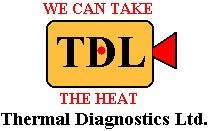IR for Refractory Inspections
Sponsored by:

IR for Refractory Inspections
Infrared thermography is frequently used for condition monitoring of refractory-lined vessels such as boilers, furnaces, reformers, and cat crackers. By inspecting these same vessels during different stages of start-up, one can find problems that may not be detected when the subject vessel is operating at full rates and temperature.
Within refractory-lined vessels, refractory will tend to expand as temperature increases. In a perfect world, there should be no detectable thermal anomalies during low temperature operation but, in fact, you may be able to readily detect refractory problems while the unit is operating at below normal temperatures.
During startup, one may notice that some hot spots will disappear once the vessel has reached normal operating condition. This is because the refractory has expanded and sealed off cracks within the interior of the unit. It is not uncommon to see an exception that has reached near critical temperature to completely disappear or cool to an acceptable limit once the vessel has reached full rates. Hot spots remaining after startup may indicate serious problems and should be closely monitored.
By identifying exceptions at lower operating temperatures, one may better predict where a future problem or failure may occur. For vessels subject to cyclical loading, these same areas are usually the first to deteriorate due to an excessive amount of expansion and contraction.
When used as a quality assurance or condition monitoring tool, infrared thermography can help to avoid unnecessary or unexpected shutdowns thereby saving a facility valuable production time and money.
This Tip of the Week was submitted by:
Sonny James
Thermal Diagnostics Limited
15 Robertson Street
Les Efforts East
San Fernando
Trinidad, West Indies

